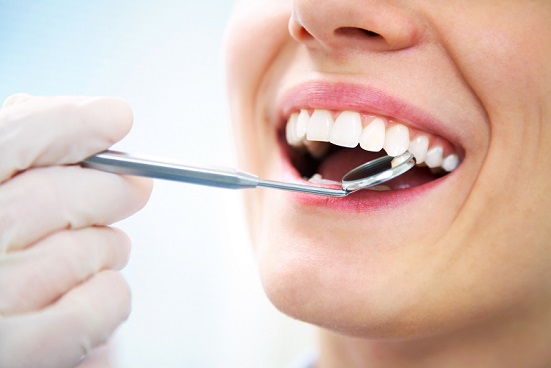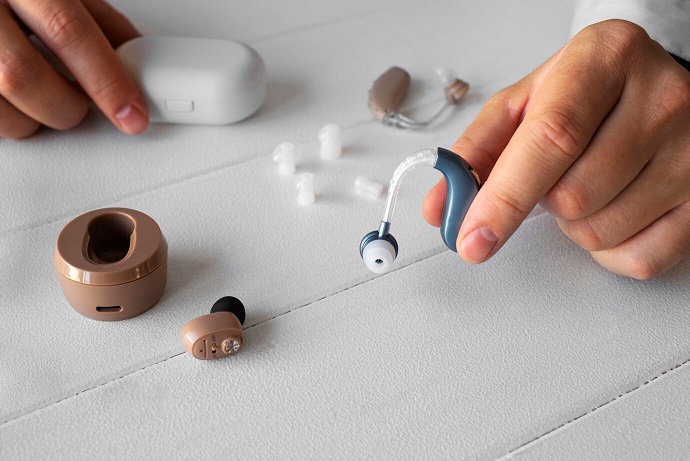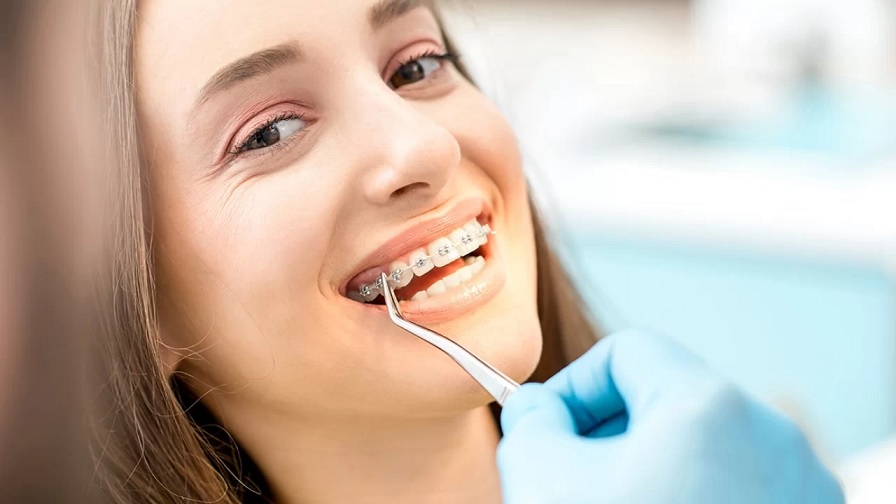Introduction
A radiant smile is often considered a universal symbol of confidence and charm. However, not everyone is naturally blessed with perfect teeth. Dental imperfections, such as stains, chips, misalignments, or gaps, can affect one’s self-esteem and overall appearance.
Fortunately, modern dentistry offers a transformative solution in the form of dental veneers. In this comprehensive article, we will explore the world of dental veneers, covering their types, benefits, the process involved, potential candidates, maintenance, and the life-changing impact these porcelain shells have on one’s smile.
Types of Dental Veneers
Dental veneers are thin shells, typically made of porcelain, designed to cover the front surface of teeth. They can effectively correct various cosmetic dental issues. There are two primary types of dental veneers:
a. Porcelain Veneers: Porcelain veneers are the most popular and durable option. Custom-crafted in a dental laboratory, they offer a natural appearance, resist staining, and can last for a decade or more with proper care.
b. Composite Resin Veneers: These veneers are made from a tooth-colored resin material and can be applied directly to the teeth. While they are more cost-effective, composite resin veneers are generally less durable than porcelain veneers and may require more frequent maintenance.
Benefits of Dental Veneers
Dental veneers offer numerous benefits that make them an attractive option for individuals seeking smile transformation:
a. Aesthetic Enhancement: Veneers can effectively hide a range of imperfections, including discoloration, stains, chips, and gaps, instantly enhancing the appearance of teeth.
b. Minimally Invasive: Unlike some other cosmetic dental procedures, veneers require minimal removal of natural tooth structure, preserving most of the healthy tooth.
c. Durability: Porcelain veneers are highly resistant to staining and can last for many years, providing an enduring solution for a flawless smile
d. Customization: Veneers are tailor-made to match the shape, size, and color of the patient’s natural teeth, ensuring a seamless and natural look.
e. Quick Results: Veneers can produce a significant transformation in just a few dental appointments, offering a fast and effective solution for smile enhancement.
The Veneer Placement Process
The process of getting dental veneers typically involves several steps, including consultation, preparation, placement, and follow-up. Here is an overview of the procedure:
a. Consultation: The journey begins with a consultation with a cosmetic dentist. During this appointment, the patient’s goals and expectations are discussed, and the dentist evaluates the oral health and suitability for veneers.
b. Tooth Preparation: To make room for the veneers, a thin layer of enamel is removed from the front surface of the teeth to be treated. This ensures that the veneers will not appear bulky when placed.
c. Impressions and Design: After tooth preparation, impressions of the teeth are taken. These impressions are sent to a dental laboratory where skilled technicians create custom veneers that perfectly match the patient’s teeth in terms of size, shape, and color.
d. Temporary Veneers: While the permanent veneers are being fabricated, temporary veneers may be placed to protect the prepared teeth and maintain aesthetics.
e. Veneer Placement: Once the permanent veneers are ready, they are bonded to the prepared teeth using a strong adhesive. The dentist ensures that the veneers are properly positioned and that the patient is satisfied with the fit and appearance.
f. Final Adjustments: The dentist may make final adjustments to the veneers to ensure that the bite is comfortable and the aesthetics are impeccable.
Candidates for Dental Veneers
Dental veneers are a versatile option for individuals seeking cosmetic improvements to their smiles. Candidates for dental veneers typically include:
a. Discolored Teeth: Teeth that are severely stained and resistant to teeth whitening treatments can benefit from veneers, as they provide a long-lasting solution for a brighter smile.
b. Chipped or Worn Teeth: Veneers can effectively restore the appearance of teeth with minor chips, fractures, or excessive wear.
c. Gaps and Misalignment: Mild cases of teeth misalignment and small gaps between teeth can be concealed with veneers, offering an alternative to orthodontic treatment.
d. Irregularly Shaped Teeth: Veneers can create uniformity in the shape and size of teeth, ensuring a harmonious smile.
e. Healthy Teeth: Candidates for veneers should have good overall oral health. Any underlying dental issues, such as gum disease or decay, should be addressed before considering veneer placement.
Maintaining Dental Veneers
Maintaining dental veneers is relatively simple and requires the same good oral hygiene practices that one would use for natural teeth:
a. Regular Dental Check-ups: Continue to see your dentist for regular check-ups and cleanings to ensure the health of your natural teeth and the condition of your veneers.
b. Proper Oral Hygiene: Brush your teeth with a non-abrasive toothpaste and floss daily. While veneers are resistant to staining, it’s important to prevent any staining of the natural teeth surrounding the veneers.
c. Avoid Chewing Hard Objects: Veneers are durable, but they can still be damaged by chewing on hard objects, like ice or pens. Avoid such habits to extend the lifespan of your veneers.
The Life-Changing Impact of Dental Veneers
The impact of dental veneers extends beyond aesthetics. Here are some ways in which veneers can transform lives:
a. Improved Confidence: A beautiful smile can boost self-esteem and confidence, leading to more positive interactions in both personal and professional life.
b. Enhanced Dental Function: Veneers can restore the functionality of damaged or misaligned teeth, making it easier to bite and chew properly.
c. Youthful Appearance: Veneers can take years off one’s appearance, giving a more youthful look by concealing dental imperfections.
d. Better Oral Health: Veneers, when properly maintained, can protect the underlying teeth from further damage, preventing future dental issues.
Conclusion
Dental veneers have revolutionized the world of cosmetic dentistry, offering a quick, minimally invasive, and highly effective solution for a flawless smile.
With their numerous benefits, customizability, and the life-changing impact they can have on a person’s confidence and self-esteem, dental veneers are a sought-after option for those seeking dental perfection.
If you have dental imperfections that impact your smile, consult with a cosmetic dentist to explore the possibilities that veneers can offer in transforming your smile and your life.



